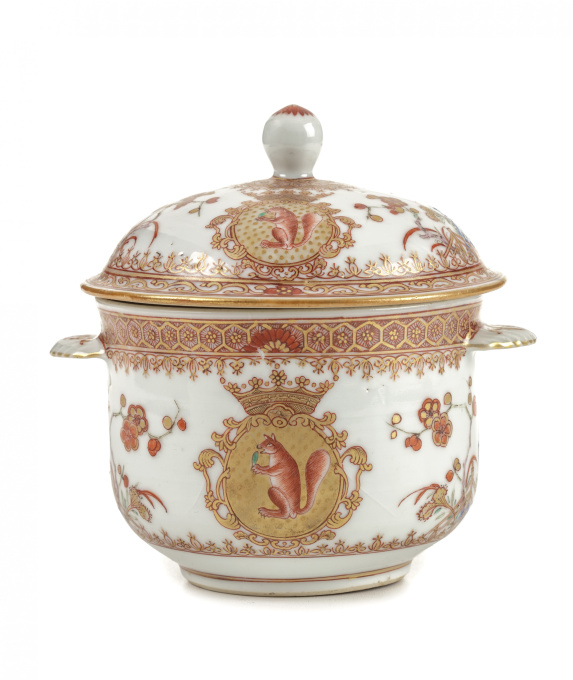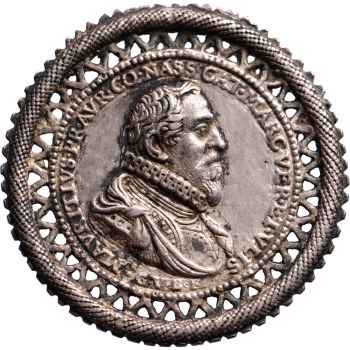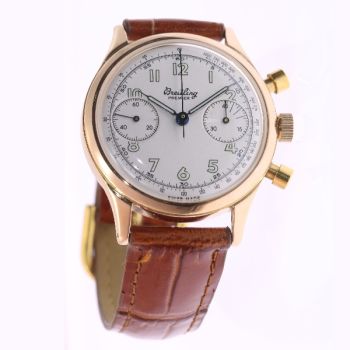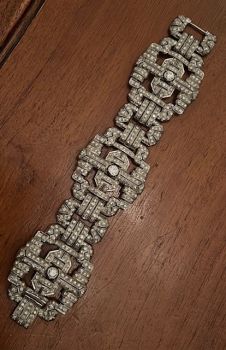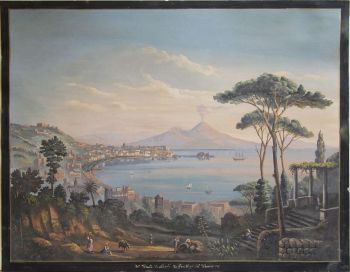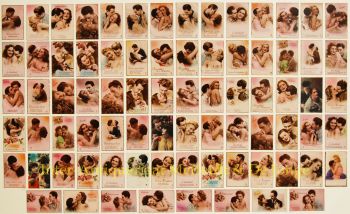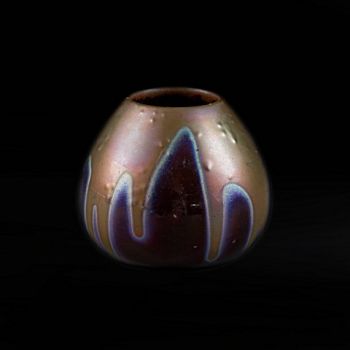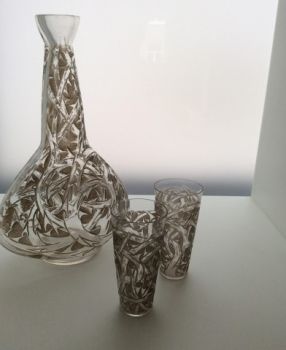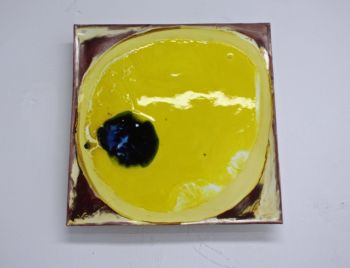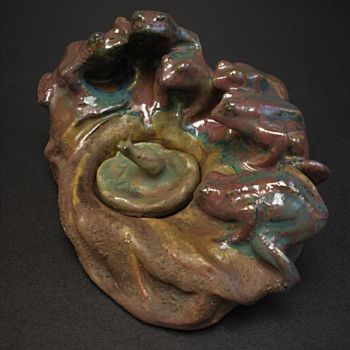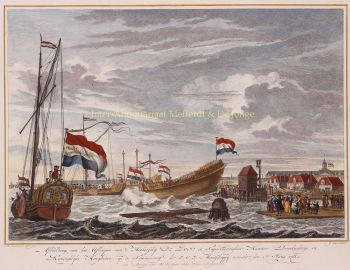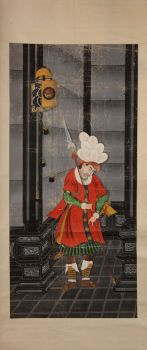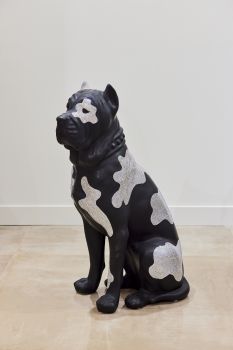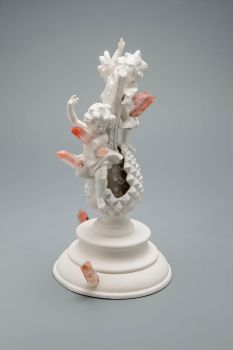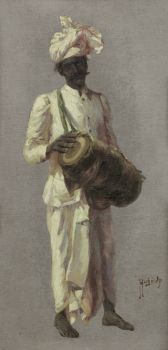UMA TAÇA DE AÇÚCAR DE PORCELANA 'SICHTERMAN' DA EXPORTAÇÃO CHINESA, KANDIJPOT 1730 - 1735
Artista Desconhecido
PorcelanaPorcelana chinesa
13 ⨯ 11 cm
Atualmente indisponível via Gallerease
Zebregs & Röell - Fine Art - Antiques
- Sobre arteA CHINESE EXPORT PORCELAIN 'SICHTERMAN' SUGAR BOWL AND COVER, KANDIJPOT
Yongzheng period, circa 1730-1735
Both the bowl and the lid decorated in iron-red, blue, yellow and green enamels and gold, showing a squirrel in profile eating a nut, surrounded by bamboo and floral sprays, the bowl restored.
W. 13.7 x H. 11 cm
Note:
The shape of this Chine de commande bowl and cover copies a European model sugar bowl and belonged probably to one of the first of altogether eight services ordered by Jan Albert Sichterman (1692-1764), and sent to the Netherlands from about 1730 onwards on board Dutch East Indiamen, but also on Swedish, English and Ostend ships.
Jan Albert Sichterman was the richest man of Groningen after his return in 1744 from the East Indies and was called “de Koning van Groningen”.
After a duel for which Jan Albert, as a soldier, would probably have been convicted in a court-martial, he had to escape the country and in 1716 sailed for the East Indies. There he had a brilliant career in the Dutch factories on the Ganges river in Bengal. First in Houghly from 1717 till 1723, then as head of the factory in Cassimbasar from 1725 till 1734 and finally as Director of Bengal in Houghly till 1744. In 1721 he had married Sibylla Volkera Sadelijn (1699-1781) in Houghly, daughter of Jacob Sadelijn who was Jan Albert’s predecessor as Director of Bengal, and Anna Françoise Pelgrom, daughter of Jacob Pelgrom (see item 39), Director of Bengal from 1701 till 1705. Jan Albert set up a silk and cotton weaving mill and had a significant impact on the trade of cotton and silk fabrics to the Netherlands. However, his fortune he made in private (illegal) trade and smuggling.
After his death in 1764, most of his belongings were auctioned including a total of over 4000 pieces of porcelain, including probably about 400 pieces of armorial porcelain.
- Sobre artista
Pode acontecer que um artista ou criador seja desconhecido.
Algumas obras não devem ser determinadas por quem são feitas ou são feitas por (um grupo de) artesãos. Exemplos são estátuas dos tempos antigos, móveis, espelhos ou assinaturas que não são claras ou legíveis, mas também algumas obras não são assinadas.
Além disso, você pode encontrar a seguinte descrição:
•"Atribuído a …." Na opinião deles, provavelmente uma obra do artista, pelo menos em parte
• “Estúdio de…” ou “Oficina de” Em sua opinião um trabalho executado no estúdio ou oficina do artista, possivelmente sob sua supervisão
• "Círculo de ..." Na opinião deles, uma obra da época do artista mostrando sua influência, intimamente associada ao artista, mas não necessariamente seu aluno
•“Estilo de…” ou “Seguidor de…” Na opinião deles, um trabalho executado no estilo do artista, mas não necessariamente por um aluno; pode ser contemporâneo ou quase contemporâneo
• "Maneira de ..." Na opinião deles, uma obra no estilo do artista, mas de data posterior
•"Depois …." Na opinião deles uma cópia (de qualquer data) de uma obra do artista
• “Assinado…”, “Datado…” ou “Inscrito” Na opinião deles, a obra foi assinada/datada/inscrita pelo artista. A adição de um ponto de interrogação indica um elemento de dúvida
• "Com assinatura ….”, “Com data ….”, “Com inscrição ….” ou “Tem assinatura/data/inscrição” na opinião deles a assinatura/data/inscrição foi adicionada por outra pessoa que não o artista
Você está interessado em comprar esta obra de arte?
Artwork details
Related artworks
- 1 - 4 / 12
Artista Desconhecido
Series of 6 Chinese cups and saucers (Yongzheng period)1722 - 1735
Preço em pedidoKuipers Kunst & Antiek
Artista Desconhecido
Series of 6 Chinese cups and saucers (Yongzheng period)1722 - 1735
Preço em pedidoKuipers Kunst & Antiek
1 - 4 / 12- 1 - 4 / 24
Shiba Kokan
Pintura de um holandês fantásticoearly 19th
Preço em pedidoZebregs & Röell - Fine Art - Antiques
Artista Desconhecido
The bell of the VOC fortress in Jaffna, Sri Lanka1747
Preço em pedidoZebregs & Röell - Fine Art - Antiques
 Com curadoria de
Com curadoria deDanny Bree
1 - 4 / 24Artista Desconhecido
Series of 6 Chinese cups and saucers (Yongzheng period)1722 - 1735
Preço em pedidoKuipers Kunst & Antiek
1 - 4 / 24- 1 - 4 / 12

